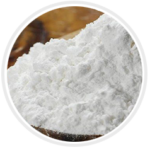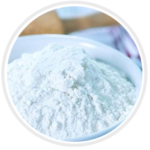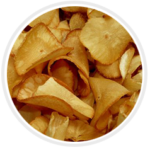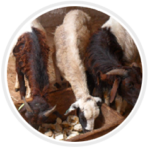The flour produced from the cassava plant, which on account of its low content of noncarbohydrate constituents might well be called a starch, is known in world trade as tapioca flour. It is used directly, made into a group of baked or gelatinized products or manufactured into glucose, dextrins and other products.
Starchy foods have always been one of the staples of the human diet. They are mostly consumed in starch-bearing plants or in foods to which commercial starch or its derivatives have been added. The first starch was probably obtained from wheat by the Egyptians for food and for binding fibres to make papyrus paper as early as 4000-3500 B.C.
Starches are now made in many countries from many different starchy raw materials, such as wheat, barley, maize, rice, white or sweet potatoes, cassava, sago palm and waxy xaize. Althbugh they have similar chemical reactions and are usually interchangeable, starches from different sources have different granular structures which affect their physical properties.
Starch and starch products are used in many food and nonfood industries and as chemical raw materials for many other purposes, as in plastics and the tanning of leather. Nonfood use of starches – such as coating, sizings and adhesives – accounts for about 75 percent of the output of the commercial starch industry.
In many industrial applications, there is competition not only among starches from various sources but also between starches and many other products. Resin glue has largely replaced starch in plywood because of its greater resistance to moisture; resin finishes are used in the textile industry and natural gums compete with starches in paper making. Nevertheless, the continuous development of new products has enabled the starch industry to continue its expansion. The growth of the starch industry in the future appears to be very promising, providing the quality of products and the development of new products permit them to compete with the various substitutes.
Cassava Flour

NASUS International Cassava Product’s cassava flour is a very good replacement for wheat flour.
Cassava Starch

For cassava, the process of starch extraction is relatively simple as there are only small amounts of secondary substances, such as protein, in the roots.
Cassava Chips

Cassava, or yucca, grows much like the potato and was originally consumed in ancient South American civilizations.
Cassava Feed

Cassava is widely used in most tropical areas for feeding pigs, cattle, sheep and poultry.
